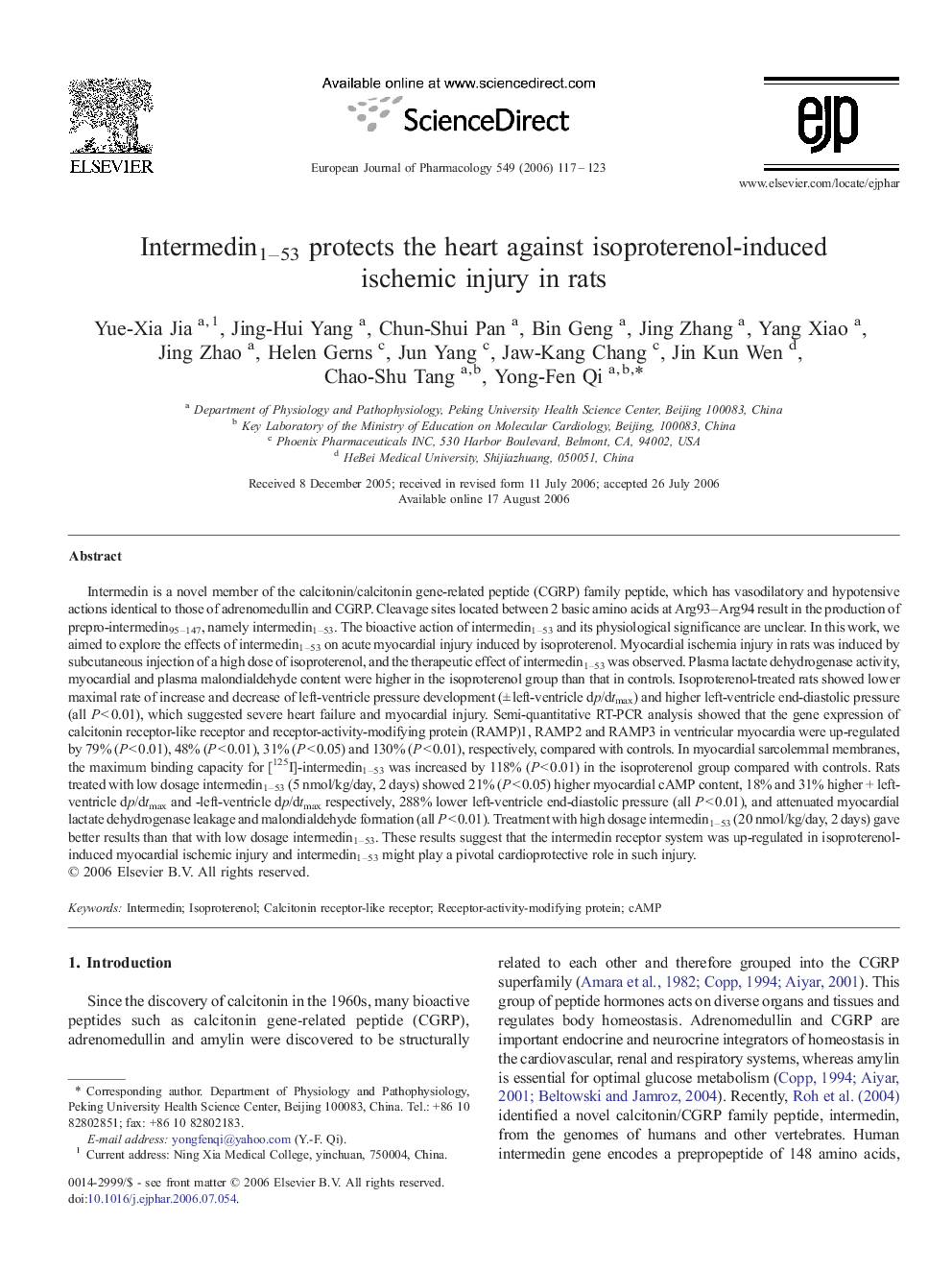| Article ID | Journal | Published Year | Pages | File Type |
|---|---|---|---|---|
| 2536794 | European Journal of Pharmacology | 2006 | 7 Pages |
Intermedin is a novel member of the calcitonin/calcitonin gene-related peptide (CGRP) family peptide, which has vasodilatory and hypotensive actions identical to those of adrenomedullin and CGRP. Cleavage sites located between 2 basic amino acids at Arg93–Arg94 result in the production of prepro-intermedin95–147, namely intermedin1–53. The bioactive action of intermedin1–53 and its physiological significance are unclear. In this work, we aimed to explore the effects of intermedin1–53 on acute myocardial injury induced by isoproterenol. Myocardial ischemia injury in rats was induced by subcutaneous injection of a high dose of isoproterenol, and the therapeutic effect of intermedin1–53 was observed. Plasma lactate dehydrogenase activity, myocardial and plasma malondialdehyde content were higher in the isoproterenol group than that in controls. Isoproterenol-treated rats showed lower maximal rate of increase and decrease of left-ventricle pressure development (± left-ventricle dp/dtmax) and higher left-ventricle end-diastolic pressure (all P < 0.01), which suggested severe heart failure and myocardial injury. Semi-quantitative RT-PCR analysis showed that the gene expression of calcitonin receptor-like receptor and receptor-activity-modifying protein (RAMP)1, RAMP2 and RAMP3 in ventricular myocardia were up-regulated by 79% (P < 0.01), 48% (P < 0.01), 31% (P < 0.05) and 130% (P < 0.01), respectively, compared with controls. In myocardial sarcolemmal membranes, the maximum binding capacity for [125I]-intermedin1–53 was increased by 118% (P < 0.01) in the isoproterenol group compared with controls. Rats treated with low dosage intermedin1–53 (5 nmol/kg/day, 2 days) showed 21% (P < 0.05) higher myocardial cAMP content, 18% and 31% higher + left-ventricle dp/dtmax and -left-ventricle dp/dtmax respectively, 288% lower left-ventricle end-diastolic pressure (all P < 0.01), and attenuated myocardial lactate dehydrogenase leakage and malondialdehyde formation (all P < 0.01). Treatment with high dosage intermedin1–53 (20 nmol/kg/day, 2 days) gave better results than that with low dosage intermedin1–53. These results suggest that the intermedin receptor system was up-regulated in isoproterenol-induced myocardial ischemic injury and intermedin1–53 might play a pivotal cardioprotective role in such injury.
